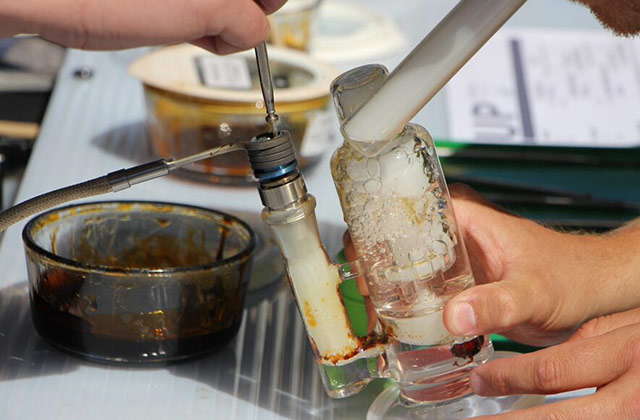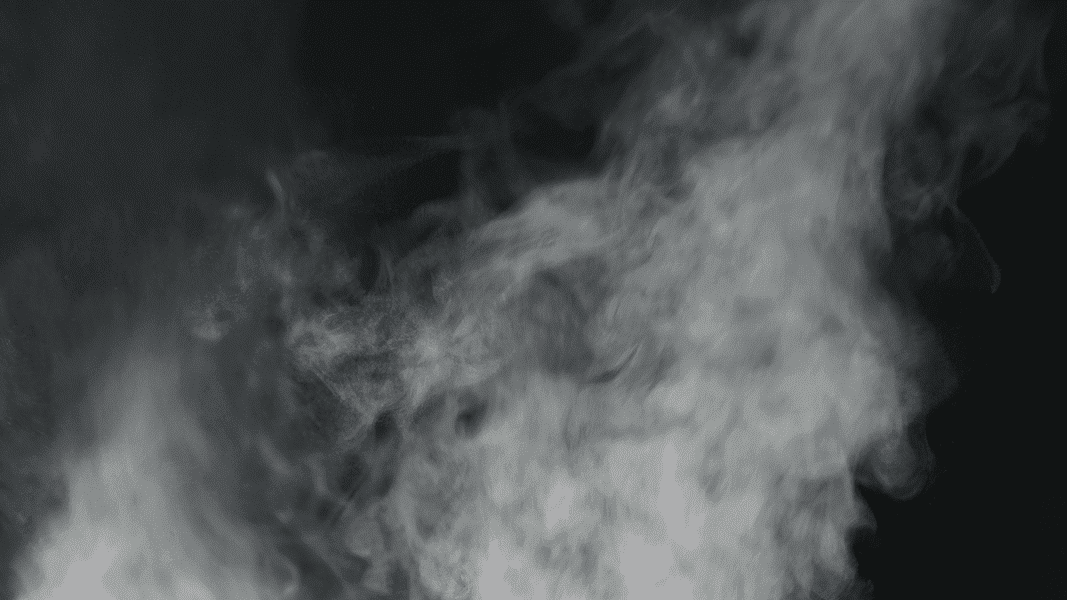There's a lot of information out there about what temperatures are best when vaporizing. The best temperature for vaping herb is dependent on what you are vaporizing for; whether it be pain, anxiety, appetite, etc. One factor that can have an effect on what temperature you use is how moist your herb is. Dryer herb will need a lower temperature so that it doesn't combust. Fresh herb will often contain more moisture. To deal with this, it is recommended to do what‘s called a flavonoid run. Put the vaporizer at a lower temperature (around 138° – 148°C/280° - 298°F .), to dry the herb a bit. After this run, your herb should be dry enough to vaporize efficiently at THC and other cannabinoid temperatures. The temperatures below are an approximate guideline and not absolute.
Cannabanoids - The range of temperature in which all cannabinoids evaporate lies between 157 and 220 degrees Celsius (315° - 428°F). All cannabanoids have different boiling points. Lower temperatures will have more of a heady effect, and higher temperatures will have a more body effect.
THC - 157 °C (315°F).
The most famous cannabinoid. It has both euphoric and analgesic effects, inducing a great sense of relaxation.
CBD - 160 - 180 °C (320° - 356°F).
The cannabinoid most sought after by medical users for its vast array of medicinal applications. It partly counters the effects of THC, effectively countering feelings of anxiety and paranoia.
Delta-8-THC - 175 – 178 °C (347° - 352°F).
This cannabinoid is very similar to THC, but it is more stable and less psychoactive. It has great anti-vomiting properties.
CBN - 185 °C (365°F).
CBN is often found in quite small amounts, however, its effects can still be felt. It breaks down THC and is highly associated with a sedative effect.
CBC - 220 °C (428°F).
This cannabinoid has anti-inflammatory and anti-fungal properties.
THCV - 220 °C (428°F).
THCV has been shown to moderate the psychoactive effects of THC, but more research is required.
Combustion: Dry weed can begin to combust at around 200 °C. The maximum heat weed can take before starting to burn is around 230 °C., depending on how humid it is.
Flavonoids - Flavonoids are also thought to have secondary health benefits.
Beta-sitosterol - 134 °C (273°F).
This flavonoid is thought to have anti-inflammatory qualities.
Apigenin - 178 °C (352°F).
Apigenin is thought to be estrogenic, anxiolytic and have anti-inflammatory properties.
Cannflavin A - 182 °C (360°F).
This flavonoid is a COX inhibitor.
Quercetin - 250 °C (482°F).
Quercetin is an antioxidant and anti-viral flavonoid. It boils at , well out of the cannabis vaporization temperatures.
Terpinoids - Terpinoids contribute to what gives plants their unique aroma.
Beta-caryophyllene - 199 °C (390°F).
Thought to be anti-inflammatory and anti-malarial.
Alpha-terpinol - 156 °C (313°F).
This terpenoid is an antioxidant, sedative, antibiotic and anti-malarial.
Beta-myrcene - 166- 168 °C (331° - 334°F).
This is analgesic, an antibiotic and anti-inflammatory.
Delta-3-carene - 168 °C (334°F).
This terpenoid has anti-inflammatory properties.
1,8-cineole - 176 °C (349°F).
1,8-cineole increase cerebral blood flow, acts as a stimulant, and is anti-viral, anti-inflammatory and an antibiotic.
D-limonene - 177 °C (351°F).
Perhaps surpringsingly, D-limonene appears naturally in cannabis. It has anti-mutagenic, antidepressant and immune system potentiating properties.
P-cymene - 177 °C (351°F).
P-cymene is an antibiotic and an anticandidal agent.
Linalool - 198 °C (388°F).
This is an antidepressant, sedative and immune system potentiator.
Terpinol-4-ol - 209 °C (408°F).
This is an antibiotic and an AChE inhibitor.
Borneol - 210 °C (410°F).
Borneol is an antibiotic.
Alpha-terpineol - 217 °C (423°F).
This terpenoid is a sedative, antibiotic, antioxidant and AChE inhibitor.
Pulegone - 224 °C (435°F).
Pulegone is a sedative and potentially has memory boosting properties.
Cannabanoids - The range of temperature in which all cannabinoids evaporate lies between 157 and 220 degrees Celsius (315° - 428°F). All cannabanoids have different boiling points. Lower temperatures will have more of a heady effect, and higher temperatures will have a more body effect.
THC - 157 °C (315°F).
The most famous cannabinoid. It has both euphoric and analgesic effects, inducing a great sense of relaxation.
CBD - 160 - 180 °C (320° - 356°F).
The cannabinoid most sought after by medical users for its vast array of medicinal applications. It partly counters the effects of THC, effectively countering feelings of anxiety and paranoia.
Delta-8-THC - 175 – 178 °C (347° - 352°F).
This cannabinoid is very similar to THC, but it is more stable and less psychoactive. It has great anti-vomiting properties.
CBN - 185 °C (365°F).
CBN is often found in quite small amounts, however, its effects can still be felt. It breaks down THC and is highly associated with a sedative effect.
CBC - 220 °C (428°F).
This cannabinoid has anti-inflammatory and anti-fungal properties.
THCV - 220 °C (428°F).
THCV has been shown to moderate the psychoactive effects of THC, but more research is required.
Combustion: Dry weed can begin to combust at around 200 °C. The maximum heat weed can take before starting to burn is around 230 °C., depending on how humid it is.
Flavonoids - Flavonoids are also thought to have secondary health benefits.
Beta-sitosterol - 134 °C (273°F).
This flavonoid is thought to have anti-inflammatory qualities.
Apigenin - 178 °C (352°F).
Apigenin is thought to be estrogenic, anxiolytic and have anti-inflammatory properties.
Cannflavin A - 182 °C (360°F).
This flavonoid is a COX inhibitor.
Quercetin - 250 °C (482°F).
Quercetin is an antioxidant and anti-viral flavonoid. It boils at , well out of the cannabis vaporization temperatures.
Terpinoids - Terpinoids contribute to what gives plants their unique aroma.
Beta-caryophyllene - 199 °C (390°F).
Thought to be anti-inflammatory and anti-malarial.
Alpha-terpinol - 156 °C (313°F).
This terpenoid is an antioxidant, sedative, antibiotic and anti-malarial.
Beta-myrcene - 166- 168 °C (331° - 334°F).
This is analgesic, an antibiotic and anti-inflammatory.
Delta-3-carene - 168 °C (334°F).
This terpenoid has anti-inflammatory properties.
1,8-cineole - 176 °C (349°F).
1,8-cineole increase cerebral blood flow, acts as a stimulant, and is anti-viral, anti-inflammatory and an antibiotic.
D-limonene - 177 °C (351°F).
Perhaps surpringsingly, D-limonene appears naturally in cannabis. It has anti-mutagenic, antidepressant and immune system potentiating properties.
P-cymene - 177 °C (351°F).
P-cymene is an antibiotic and an anticandidal agent.
Linalool - 198 °C (388°F).
This is an antidepressant, sedative and immune system potentiator.
Terpinol-4-ol - 209 °C (408°F).
This is an antibiotic and an AChE inhibitor.
Borneol - 210 °C (410°F).
Borneol is an antibiotic.
Alpha-terpineol - 217 °C (423°F).
This terpenoid is a sedative, antibiotic, antioxidant and AChE inhibitor.
Pulegone - 224 °C (435°F).
Pulegone is a sedative and potentially has memory boosting properties.
Last edited:



 ).
). )and the Volcano, trough the wip into the bong
)and the Volcano, trough the wip into the bong